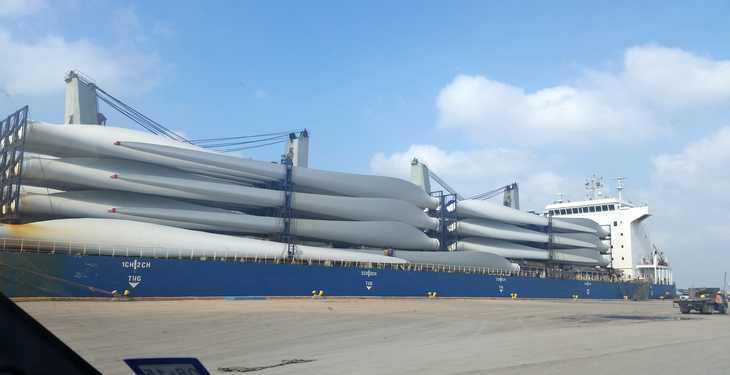A wave of deals in the wind power industry, waiting to gauge the impact of Donald Trump’s election and Brexit, has highlighted opposing strategies in the production of the most complicated and sensitive turbine components: blades.
Companies are at odds over whether to go in-house or out to produce the blades, which can be as long as a football pitch, as they ride out a global M&A frenzy in a sector still reliant on fickle state support, according to Reuters.
General Electric and Senvion, two of the top 10 global wind turbine makers, recently announced deals to snap up rotor-blades makers in a bet on integration.
This conflicts with outsourcing strategies at rivals including Denmark’s Vestas, China’s Goldwind and Spain’s Gamesa, which is merging with insourcing stalwart Siemens’ wind business.
“There are some parts that are a source of differentiation, so you want to keep ownership of that,” said Jean-Marc Lechene, chief operating officer at Vestas, the world’s biggest turbine maker, referring to technology behind the blades.
On the other hand, manufacturing can be routine and be shared out which is why these two trends have emerged, he added.
Growing uncertainty over future support for renewables – triggered by Trump’s election victory in the United States and Britain’s decision to leave the EU – could tip the balance in favor of outsourcing.
“Being able to respond to a shift in demand from one country to another is important given that the sector is dependent on political support, which can change quickly,” Macquarie analyst Gurpreet Gujral said.
Blades account for about a fifth of the component costs for wind turbines – which stand at about 3 million euros ($3.2 million) for the most common models – and are key in determining their power output.
As they are constantly exposed to different levels of wind, their design is crucial, yet their construction – which requires adhesives that join different layers of carbon or glass-fiber to dry at exactly the right temperatures – can also be complex.
Hard-liners including Germany’s Enercon are cagey about their technology and production techniques, hoping that controlling all steps of the process will give them the upper hand in the highly competitive market.
Vestas, by contrast, has outsourced about a fifth of blade production, helping it to raise the volume of produced and shipped turbines by 30 percent in 2015, while costs only rose by a fifth to 6.9 billion euros.
“Outsourcing can give turbine vendors more flexibility in using globally located independent manufacturers while avoiding the need to build new factories to serve all global markets,” said Jesse Broehl, senior analyst at Navigant Research.
